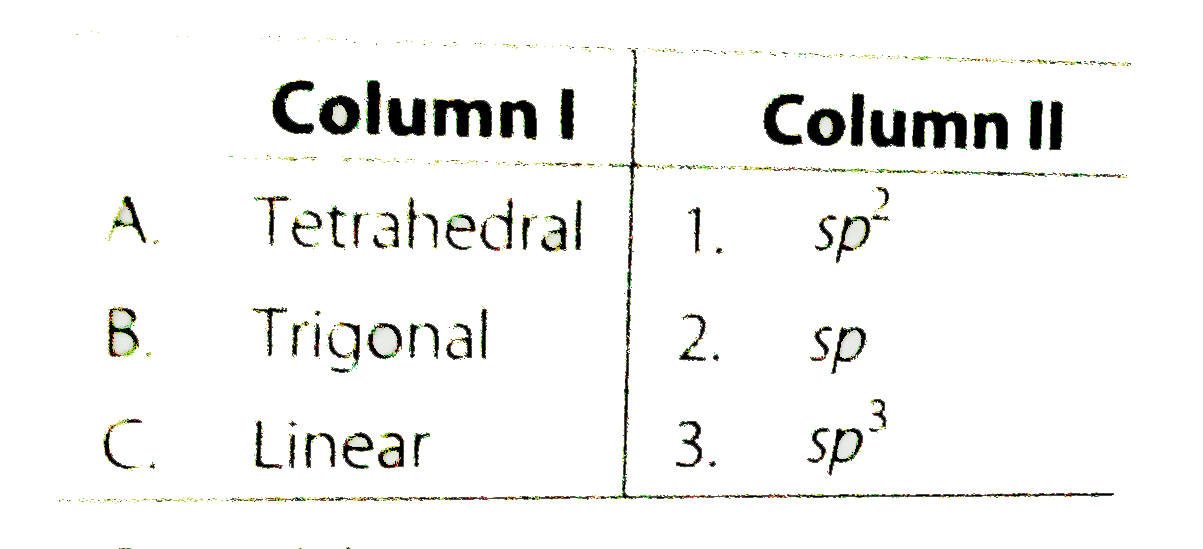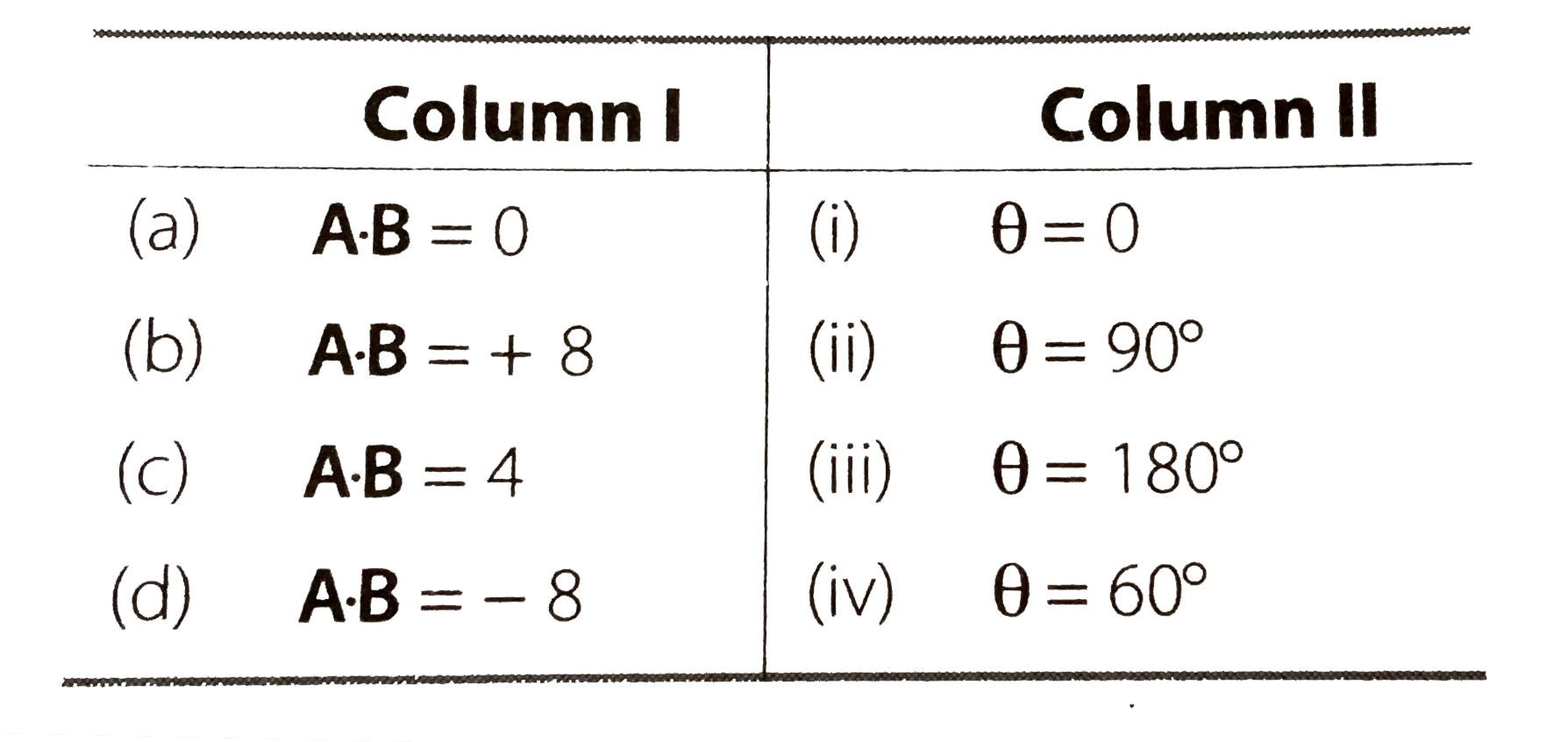Match the elements given in Column I with the properties mentioned in Column II.
ColumnIColumnIIA.Li1.Insoluble sulphateB.Na2.Strongest monoacidic baseC.Ca3.Most negativeEΘvalue among alkali metalsD.Ba4.Insoluble oxalate5.6s2outer electronic configuration
Column IColumn II(a)Li(i)Insoluble sulphate
Column IColumn II(b)Na(ii)Strongest mono acidic base
{:("Column I","Column II"),((c ) "Ca",(iii)"Most negative" E^(ɵ) "value among alkali metals"):}
Column IColumn II(d)Ba(iii)Insoluble oxalate
The correct Answer is:A-III, B-II, C-IV, D-I
Step by step video, text & image solution for Match the elements given in Column I with the properties mentioned in Column II. {:(Column I,Column II),(A.Li,1."Insoluble sulphate"),(B.Na,2."Strongest monoacidic base"),(C.Ca,3."Most negative" E^(Theta) "value among alkali metals"),(D.Ba,4."Insoluble oxalate"),(,5.6s^(2)"outer electronic configuration"):} by Chemistry experts to help you in doubts & scoring excellent marks in Class 11 exams.
Updated on:21/07/2023Topper's Solved these Questions
- S-BLOCK ELEMENTS (ALKALI AND ALKALINE EARTH METALS )BOOK - DINESH PUBLICATIONCHAPTER - S-BLOCK ELEMENTS (ALKALI AND ALKALINE EARTH METALS )EXERCISE - COMPLETE THE FOLLOWING
26 Videos
- S-BLOCK ELEMENTS (ALKALI AND ALKALINE EARTH METALS )BOOK - DINESH PUBLICATIONCHAPTER - S-BLOCK ELEMENTS (ALKALI AND ALKALINE EARTH METALS )EXERCISE - MCQ
16 Videos
- S-BLOCK ELEMENTS (ALKALI AND ALKALINE EARTH METALS )BOOK - DINESH PUBLICATIONCHAPTER - S-BLOCK ELEMENTS (ALKALI AND ALKALINE EARTH METALS )EXERCISE - NCERT EXEPLAR PROBLEMS (WITH SOLUTION)
28 Videos
- REDOX REACTIONSBOOK - DINESH PUBLICATIONCHAPTER - REDOX REACTIONSEXERCISE - Reasoning Type Questions
4 Videos
- STATE OF MATTER (GASEOUS AND LIQUID STATE)BOOK - DINESH PUBLICATIONCHAPTER - STATE OF MATTER (GASEOUS AND LIQUID STATE)EXERCISE - Ulitmate Preparatory package
20 Videos
Similar Questions
Match the elements given in Column I with the properties mentioned in Column II.
ColumnIColumnIIA.Li1.Insoluble sulphateB.Na2.Strongest monoacidic baseC.Ca3.Most negativeEΘvalue among alkali metalsD.Ba4.Insoluble oxalate5.6s2outer electronic configuration
View SolutionMatch the elements given in Column I with the colour they impart to the flame given in Column II.
ColumnIColumnIIA.Cs1.Apple greenB.Na2.VioletC.K3.Brick redD.Ca4.YellowE.Sr5.Crimson redF.Ba6.Blue
View Solution
Knowledge Check
Match the elements given in column (I) with the most appropriat expected values given in column II
Column IColumn IIElementElectronegative valuesA.F(p)3.5B.O(q)3.0C.N(r)4.0D.C(s)2.5AA(r ), B(p),C(q),D(s)BA(s),B(q),C(r ),D(p)CA(p),B(q),C(r ),D(s)DA(r ),B(q), C(p),D(s)Match the entries listed in column I with appropriate properties listed in Column II
Column IColumn II(A)He(i)High electron affinity(B)Cl(ii)Most electropositive element(C)Ca(iii)Strongest reducing agent(D)Li(iv)Highest ionization energy
The correct match of contents in Column I with those in Column IIAA−iiiB−iC−iiD−ivBA−ivB−iiiC−iiD−iCA−iiB−ivC−iD−iiiDA−ivB−iC−iiD−iii
Match the shape of molecules in Column I with the type of hybridisation in Column II.

View SolutionMatch the types of colloidal systems given in Column I with the name given in Column II.
Column IColumn IIA.Solid in liquid1.FoamB.Liquid in solid 2.SolC.Liquid in liquid 3.GelD.Gas in liquid4.Emulsion
View SolutionIf |A|=2 and |B| = 4, then match the relation in Column I with the angle θ between A and B in Column II.

View SolutionMatch the items given in Column I with examples given in Column II.

View SolutionMatch the species in Column I with the bond order in Column II
Column I Column II (i)NO (a)1.5(ii)CO (b)2.0(iii)O−2 (c)2.5(iv)O2 (d)3.0
View SolutionMatch the items given in Column 1 with examples give in Column II.
Column IColumn II(a)Hydrogen bond(i)C(b)Resonance(ii)LiF(c)Ionic solid(iii)H2(d)Covalent solid(iv)HF(v)O3
View Solution
